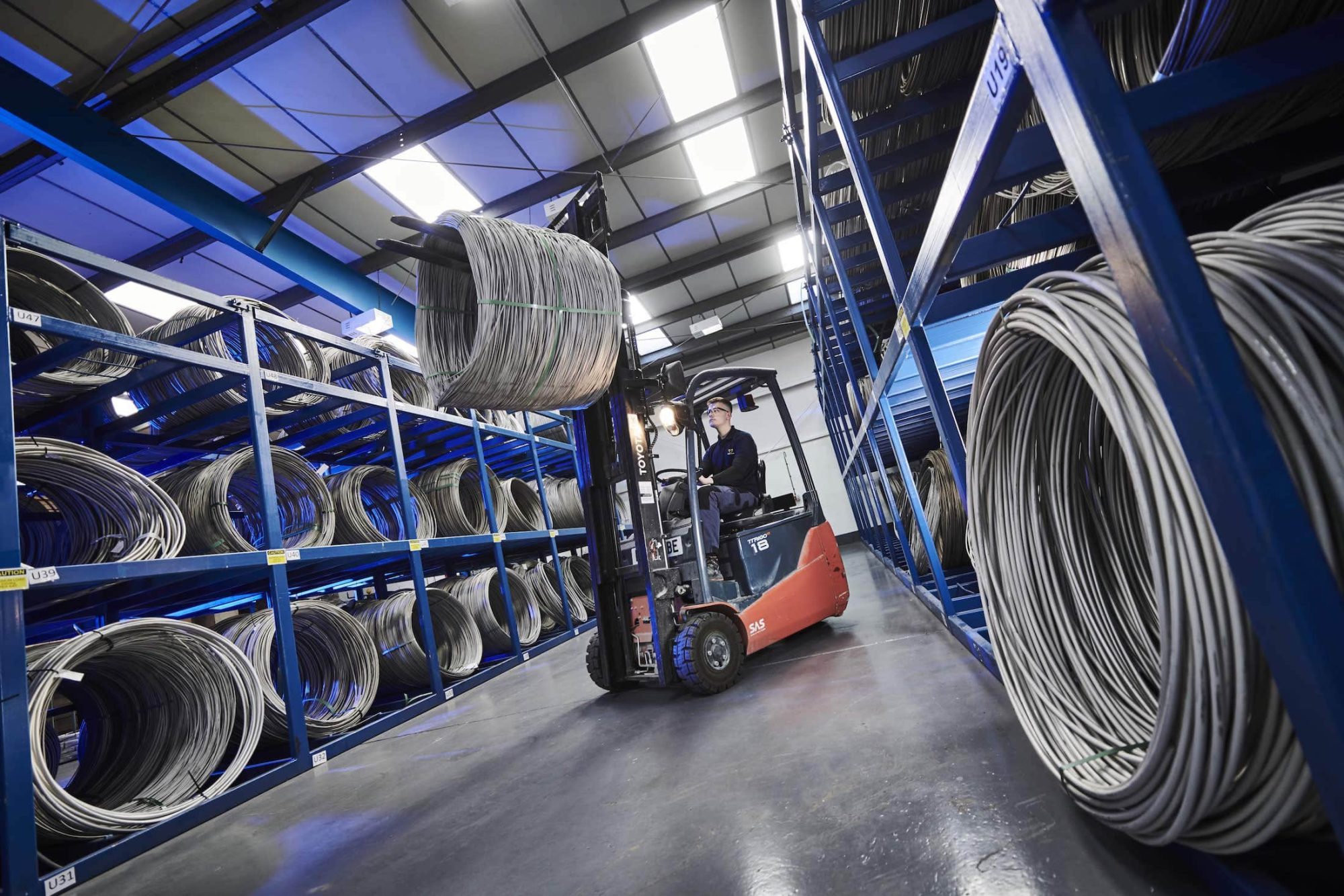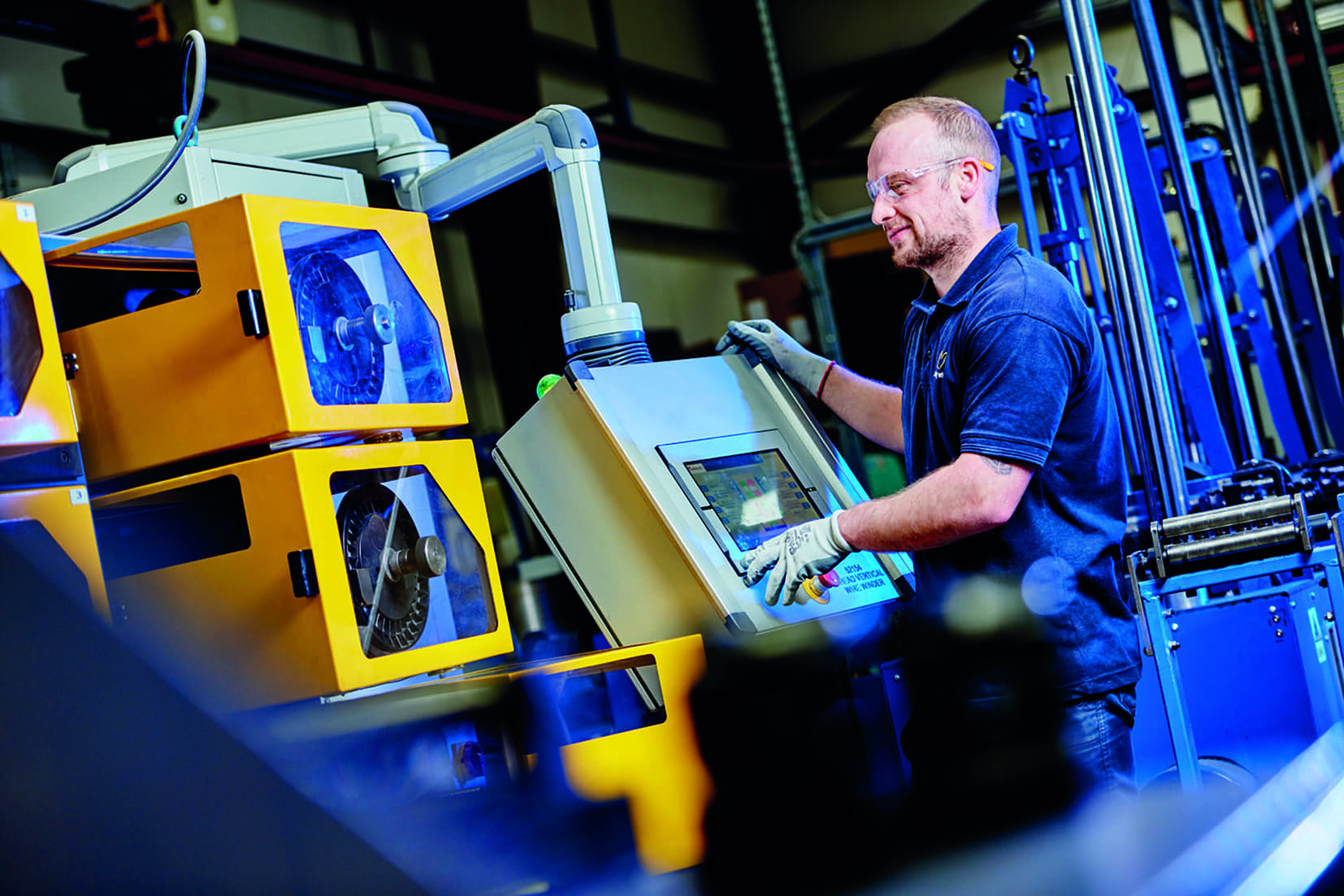
Chain Reaction
Chain Reaction
Andrew Du Plessis, Technical Director at Alloy Wire International (AWI), discusses supply chain pressures and why wire manufacturers must tap into their creative spirit to overcome price, capacity and availability issues.
Supply chain disruption. Three words that have dominated global manufacturing since 2020 and none more so than in the production and movement of High Performance Alloys around the world.
Management teams have been caught in a ‘Catch 22’ situation, with the shackles of the pandemic releasing pent up order frustration in pretty much every sector imaginable, yet the search for secure raw material supply has fallen down on capacity and mill furnaces melting under unprecedented pressure.

It’s a scenario that Andrew Du Plessis, Technical Director at Alloy Wire International (AWI) knows only too well. In fact, it has been a daily challenge that he has been grappling with alongside fellow Directors Tom Mander and Adam Shaw.
Together, they have plotted an often-complex path through the complicated maze of material prices, scarcity of certain grades of alloys and logistical issues to ensure that its 6000 clients in 65 countries have remained largely unaffected.
“We’ve never seen anything like it…in short it has been a perfect storm of widespread demand meets a supply chain still trying to recover from Covid-19,” explained Andrew, who has been working in the sector for more than 15 years.
“The mill furnaces literally melted under the pressure, with global capacity reached very quickly and little prospect of it being extended. This sent shockwaves through industry and purchasing patterns went up in smoke.
“We went from being able to buy all of our 62-strong range of alloys on regular six-month ordering schedules to having to endure 18-month lead times and that was if we were lucky enough to take a slice of the capacity.”
He went on to add: “When demand exceeds supply this sends the price of material through the roof, and we have seen certain grades of alloys peak at 40% per tonne higher than what you would expect. This is settling down now due to the alloy surcharge being taken away, but we’re nowhere near where we were three years ago.
“This is just the start. Companies have also had to contend with 20% rises in packaging and an extortionate jump in transport costs of about 37% on average.”
Alloy Wire International has been manufacturing round, flat and profile wire for 77 years and has used every morsel of its experience and expertise to meet the global challenge head-on.
Strong relationships with the mills have been key to this, combined with an ability to invest heavily in boosting stock – the latter has seen it increase our stockholding to a record-breaking 400+ tonnes, a 120% increase on the same period prior to the pandemic.
There has also been an element of risk and reward, where you must almost make a calculated gamble on how your customers will order…not just over the next three to six months, but twelve and eighteen months down the line.
“We’ve had some real successes in future ordering, but there has been the odd ‘gamble’ that hasn’t worked out and we may be overstocked in a certain alloy. It’s not ideal, but we’d rather have the material in place to stick to our three-week lead times on standard orders than have to tell the client we can’t meet our industry-leading turnaround times.
“One of our biggest ‘wins’ has been working with a long-established partner mill to start production of an alloy it hadn’t previously produced – securing supply for Alloy Wire International and delivering a new revenue stream for our supplier.”

‘Alternatives’
Sourcing certain grades of materials is also proving an elusive challenge. Alloy 41 is currently undergoing a global shortage, whilst Nimonic 80 is not as freely available as it once was, with few signs of things improving over the short and medium-term.
Wire manufacturers can either bemoan the situation and face the grim prospect of unfilled orders or they can take a more creative approach.
“AWI will always look at alternative solutions and we’ve spent the last eighteen months working with our customers to explore different alloys that could deliver the same end-use results,” continued Andrew.
“This involves understanding how the materials will be used and what properties they require – it could be withstanding extreme temperatures (both low and high), it could be extremely corrosive environments used in oil and gas or it could be medical products that have to safely sit inside the human body.
“From there, we use our technical knowledge to see which of our 62 alloys could offer an alternative solution and this may require the odd tweak to the manufacturing process to deliver the required properties.
“This may see us use the hard drawn technique to increase the higher tensile strength or we may use heat treatment to change the microstructure so that the material has better resistance to high temperatures or excessive loads.”
Andrew added: “We’ve had a lot of success in suggesting alternatives and have found X750, Inconel 718 and Phynox to be popular substitutes.”
Testing Times
Test laboratories haven’t been immune to the global supply chain disruption either.
Many of these specialist institutions have overpromised on available capacity and this has caused issues for wire manufacturers depending on their expertise to guarantee the quality and properties of existing and new material.
“We had seen this issue coming and invested heavily in developing our in-house testing capability, so that we can now handle 95% of our requirements internally,” concluded Andrew.
The volatility in material supply will no doubt continue for the short and possibly medium-term, with forward-planning, creativity and the ability to control testing critical attributes if wire manufacturers want to maintain performance in these challenging times.
Twitter: @alloywire

